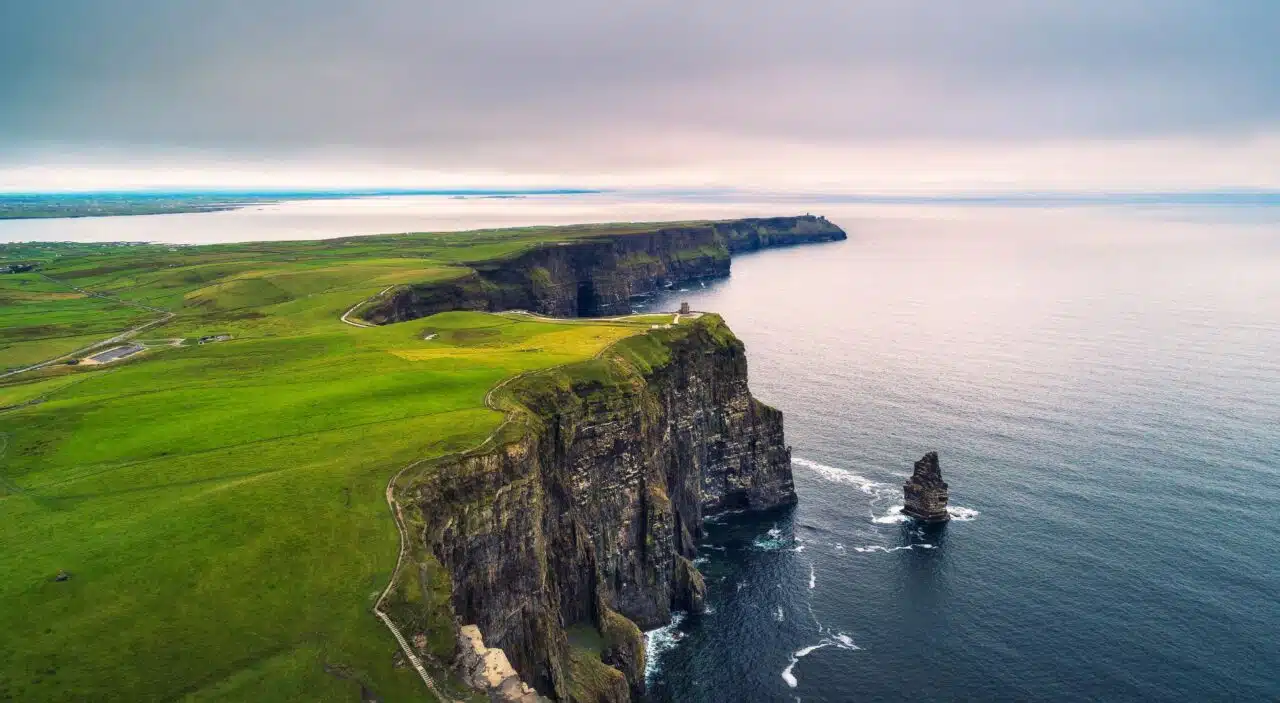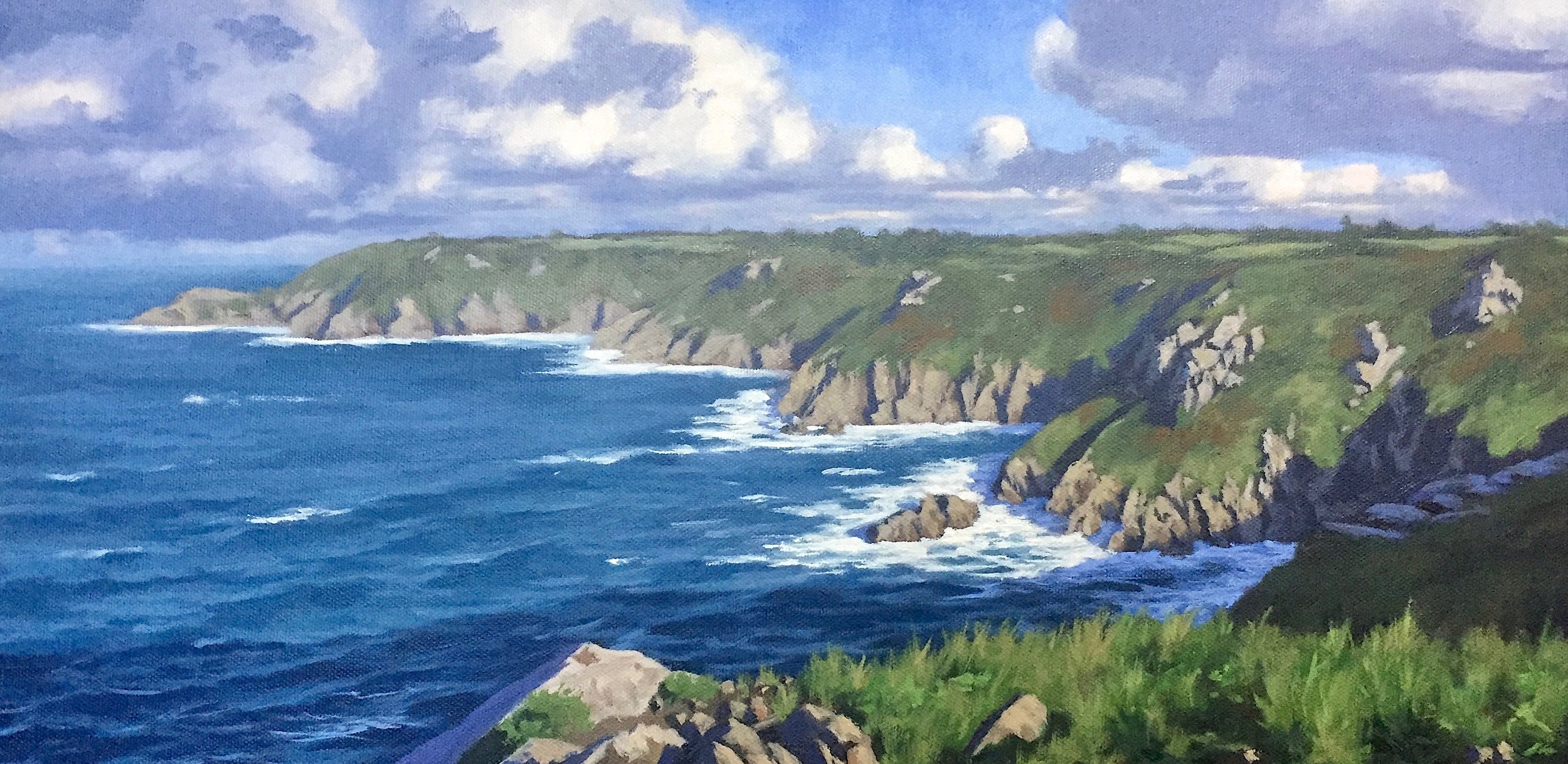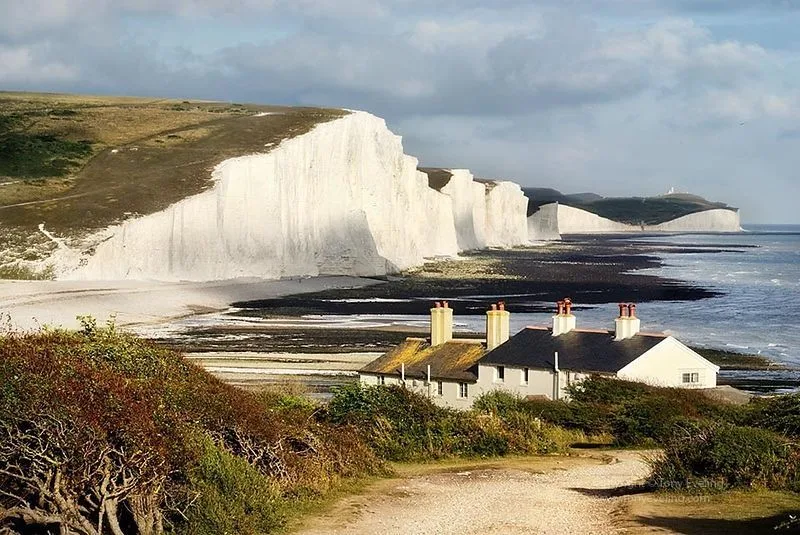Some landscapes stop you in your tracks—not because they’re filled with skyscrapers or monuments, but because nature itself put on a show. One of the most stunning examples of this? The brilliantly colored, sharply defined, and dramatically layered cliffs that have stood for over 500,000 years, revealing a geological story that dates back half a million years or more.
These cliffs are more than just a visual spectacle—they’re a fascinating archive of Earth’s natural history. With streaks of red, yellow, ochre, orange, and white, these natural formations almost look like someone painted them by hand. But the truth is even more impressive: every layer, every band of color, is the result of hundreds of thousands of years of wind, rain, tectonic movement, and erosion.

Let’s dive into everything you need to know about these ancient, colorful cliffs—where they are, how they formed, and why they’re one of the most breathtaking natural wonders you can see on Earth.
🌍 Where Are These Cliffs Located?
While several colorful cliff formations exist around the world—each with its own unique backstory—one of the most famous and dramatic examples is the Zhangye Danxia Landform Geological Park in Gansu Province, China. Often nicknamed the “Rainbow Mountains,” these vivid cliffs are part of the Danxia landform, a geological phenomenon found throughout China, but most vibrant here.
Other similar formations can be found in:
- The Painted Cliffs in Tasmania, Australia
- The Grand Canyon’s layers in Arizona, USA
- The Quebrada de Humahuaca in Argentina
- The Wave in Arizona/Utah, USA
- Vinicunca (Rainbow Mountain) in Peru
Each of these sites tells a similar story of ancient rock, weathering, and geological drama—but Zhangye Danxia remains one of the most vibrant and iconic examples.
🪨 How Were These Cliffs Formed? A Half-Million-Year Masterpiece

The dramatic colors and shapes didn’t just appear overnight. They’re the result of millions of years of sedimentation followed by uplift and erosion. Here’s how it works:
1. Sedimentation:
Over hundreds of thousands of years, mineral-rich sandstone and siltstone layers settled in horizontal bands. Each layer had different mineral contents—iron, copper, calcium, etc.—which led to the variation in colors.
2. Tectonic Forces:
As the Indian and Eurasian plates collided (the same tectonic movement that formed the Himalayas), these flat layers were slowly pushed upward and tilted, creating ridges, valleys, and angled rock faces.
3. Wind and Water Erosion:
Wind, rain, and temperature changes gradually wore away at the surface, carving out the sharp peaks, ripples, cliffs, and gorges we see today.
4. Color Exposure:
Different layers became exposed at the surface, revealing an incredible natural palette of reds, yellows, oranges, pinks, and whites—like a real-life Earth-layer cake.
The result? A naturally occurring rainbow painted across jagged mountain ridges, standing as a time capsule that dates back half a million years or more.
🎨 Why Are These Cliffs So Colorful?

The vibrant hues are caused by varied mineral content in each sediment layer:
- Red & Orange: Rich in iron oxide (rust)
- Yellow: Contains limonite or iron sulfide
- Green & Blue (less common): From chlorite or glauconite minerals
- White: Quartz or calcium-rich sediment
- Pink or Purple: A mix of manganese and iron minerals
When water seeps into the rock and oxidizes these minerals over centuries, the brilliant colors emerge—especially under sunlight, which makes them even more dazzling.
📸 What’s the Best Way to See These Cliffs?
If you’re visiting the Zhangye Danxia Geopark, here’s how to make the most of your trip:
🗺️ Main Viewpoints:
- Viewing Platform 1: Closest to the entrance and a popular photo spot
- Platform 2: Offers a more elevated view of the ridgelines
- Platform 4: Best for sunset shots—the colors pop with golden light
🕐 Best Time to Visit:
- Late afternoon to sunset: The low sun angle enhances the vivid colors
- September to October: Pleasant weather, fewer tourists, and clearer skies
- Avoid rainy days: The colors are muted when wet
🚍 How to Get There:
- Fly into Zhangye Ganzhou Airport
- From Zhangye city, the park is about a 1-hour drive
- Shuttle buses run inside the park for easy access to various viewpoints
🎫 Entry Fee:
Prices vary by season but typically range from ¥75–100 RMB (approx. $10–15 USD) per person, including shuttle bus access.
🧭 Other Colorful Cliff Formations Worth Seeing

These cliffs aren’t alone—Earth has several similarly colorful and equally ancient formations worth exploring:
🌈 Rainbow Mountain (Vinicunca), Peru
- Located in the Andes near Cusco
- Requires a high-altitude trek (~17,000 ft!)
- Multi-colored sediment layers rich in minerals
🏞️ Painted Hills, Oregon, USA
- Part of John Day Fossil Beds National Monument
- Rolling hills with stripes of red, yellow, gold, and black
- Some of the most photogenic rock formations in the U.S.
🇦🇷 Quebrada de Humahuaca, Argentina
- Located in the Andes of northern Argentina
- Known for the Hill of Seven Colors (Cerro de los Siete Colores)
- Formed over 600 million years ago!
🇦🇺 Painted Cliffs, Maria Island, Australia
- Soft sandstone cliffs striped by iron oxide
- Formed by groundwater and centuries of mineral seepage
🧠 Fun Geological Facts
- These formations are sometimes referred to as “geomorphic masterpieces.”
- The Danxia landform is a unique category named after Mount Danxia, where similar red-colored sandstone formations were first studied.
- Zhangye Danxia was listed as a UNESCO World Heritage Site in 2010.
- Wind and rain continue to shape these cliffs daily—though at a glacial pace.
- Some layers in these cliffs may contain fossils, offering insights into prehistoric life.
❓ FAQs – Colorful Cliffs and Geological Wonders
Q: Are the colors natural or enhanced?
The colors are entirely natural. They result from mineral deposits within the rock layers and natural oxidation processes. Photos may look slightly more vivid due to lighting or camera editing, but the cliffs are genuinely colorful.
Q: Can you hike on these cliffs?
In most protected areas like Zhangye Danxia, hiking directly on the formations is prohibited to prevent erosion and damage. Designated trails and viewing platforms are available.
Q: Are these cliffs fragile?
Yes. These formations are geologically delicate. Even small disturbances like footsteps or trash can cause long-term harm. Conservation efforts are crucial.
Q: Are they dangerous to visit?
Not at all—if you stick to the paths and platforms. These sites are popular tourist destinations with infrastructure like shuttle buses, signage, and facilities. But remote versions (like in Peru or Argentina) may require some fitness and acclimatization.
Q: Do the colors fade over time?
Natural weathering and erosion can dull some layers over thousands of years, but the vibrant coloration tends to stay consistent thanks to ongoing oxidation and mineral richness.
🌄 Conclusion: Earth’s Greatest Natural Artwork, 500,000 Years in the Making

There’s something humbling about standing in front of cliffs that have existed for half a million years—watching sunlight dance across stone surfaces painted by nature itself. These colorful, dramatic formations are more than just tourist attractions—they’re living museums of geology, offering a rare peek into the Earth’s timeline.
From the Danxia ranges of China to the high Andes of Peru, these rock formations remind us that some of the most beautiful art isn’t made by people—but by the slow, patient work of time, pressure, and natural forces.
So, whether you’re a geology buff, a travel junkie, or someone who simply loves a good view, these ancient cliffs are more than worth the trip. They’re a testament to the raw beauty and history of our planet—and a powerful reminder that the Earth is always creating, always transforming, and always worth exploring.
Ready to see the colors of the Earth like never before? Just follow the cliffs—they’ve been waiting for you for the past 500,000 years. 🏔️🌈
